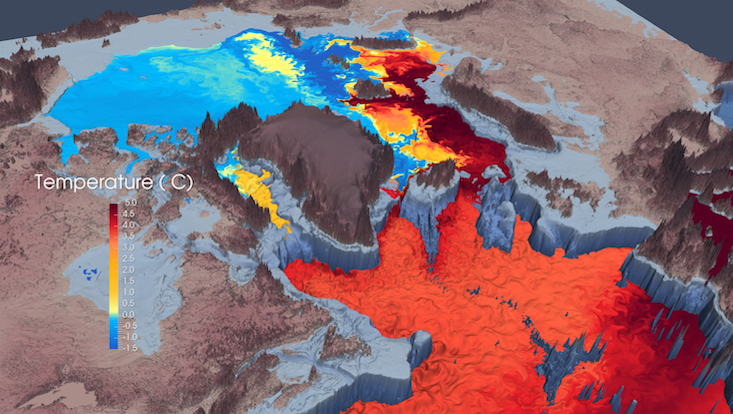Properties and circulation on a North Atlantic and Arctic Oceans' dense isopycnal layer
The animation below shows water temperature, velocity magnitude and salinity on the potential density surface σ3= 41.34 kg m-3 during year 2007 from a MITgcm 4-km resolution ocean simulation.
Also available in 1080 HD on YouTube, three corresponding videos showing separately the evolution of temperature, velocity magnitude and salinity for the entire length of 2007. View the playlist here .

Properties and circulation on a North Atlantic and Arctic Oceans' dense isopycnal layer
The density surface abruptly changes depth east and west of Greenland, being shallower (at around 200m) in the Arctic Ocean, Baffin Bay and Nordic Seas, where the upper ocean is colder and therefore denser, and deeper (at about 2000m) in the North Atlantic, where warm and light water occupies the upper ocean. The dense water surface “cascades” down the continental slope south of the Denmark Strait and Iceland-Scotland overflow regions, which are the routes of dense water export from the Nordic Seas.
The temperatures at the shown density are generally much warmer and the salinities much higher in the North Atlantic than in the Arctic Ocean and Nordic Seas, with the exception of the region off Norway, where the warm and salty Atlantic inflow progresses northwards towards the Barents Sea and Fram Strait. The strongest currents can be seen where the dense water is flowing out of the Nordic Seas “cascading” down the continental slope south of the Denmark Strait and of the Iceland-Scotland Ridge. Besides those overflow regions, water has large speeds generally all along western boundaries and within ocean eddies.
